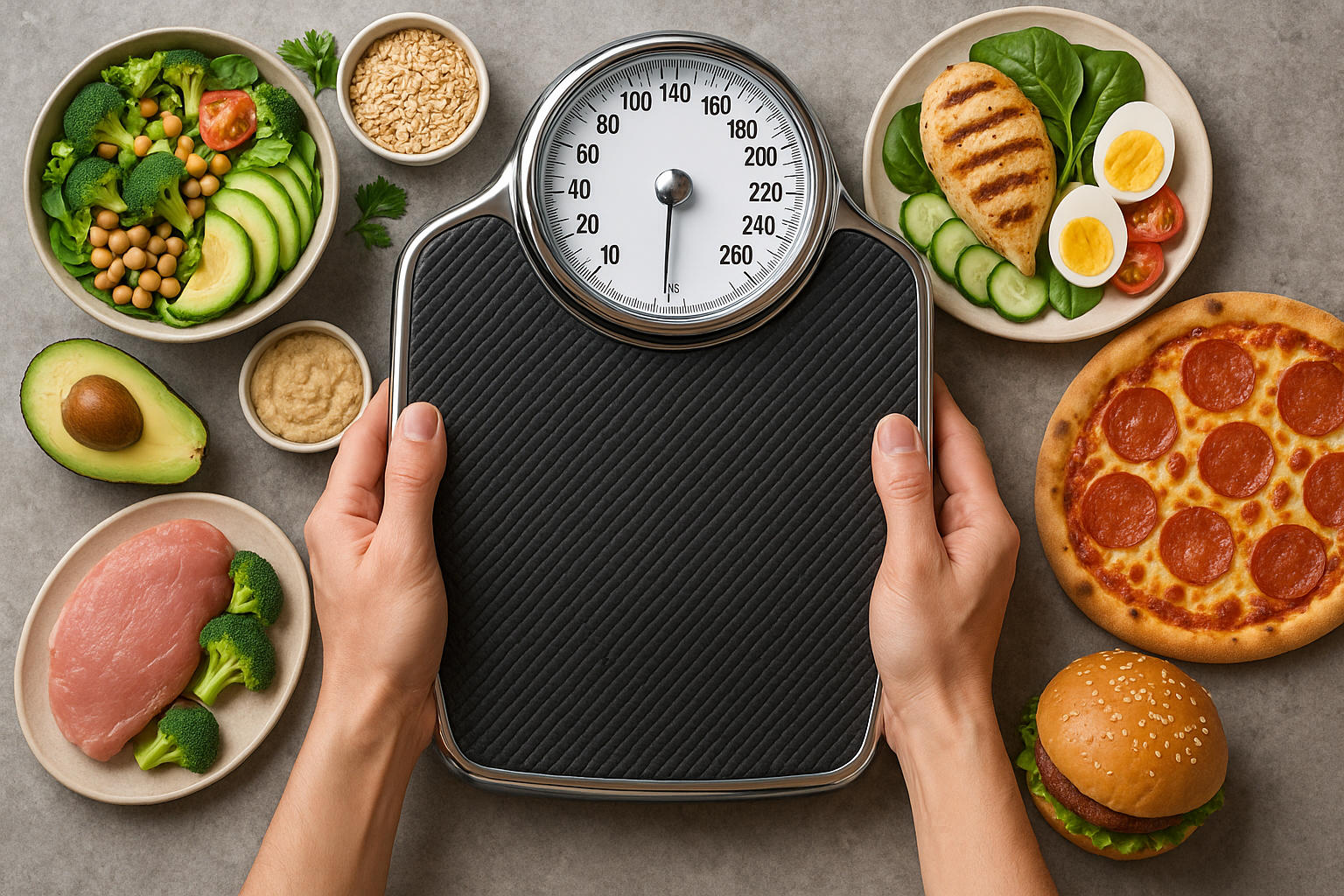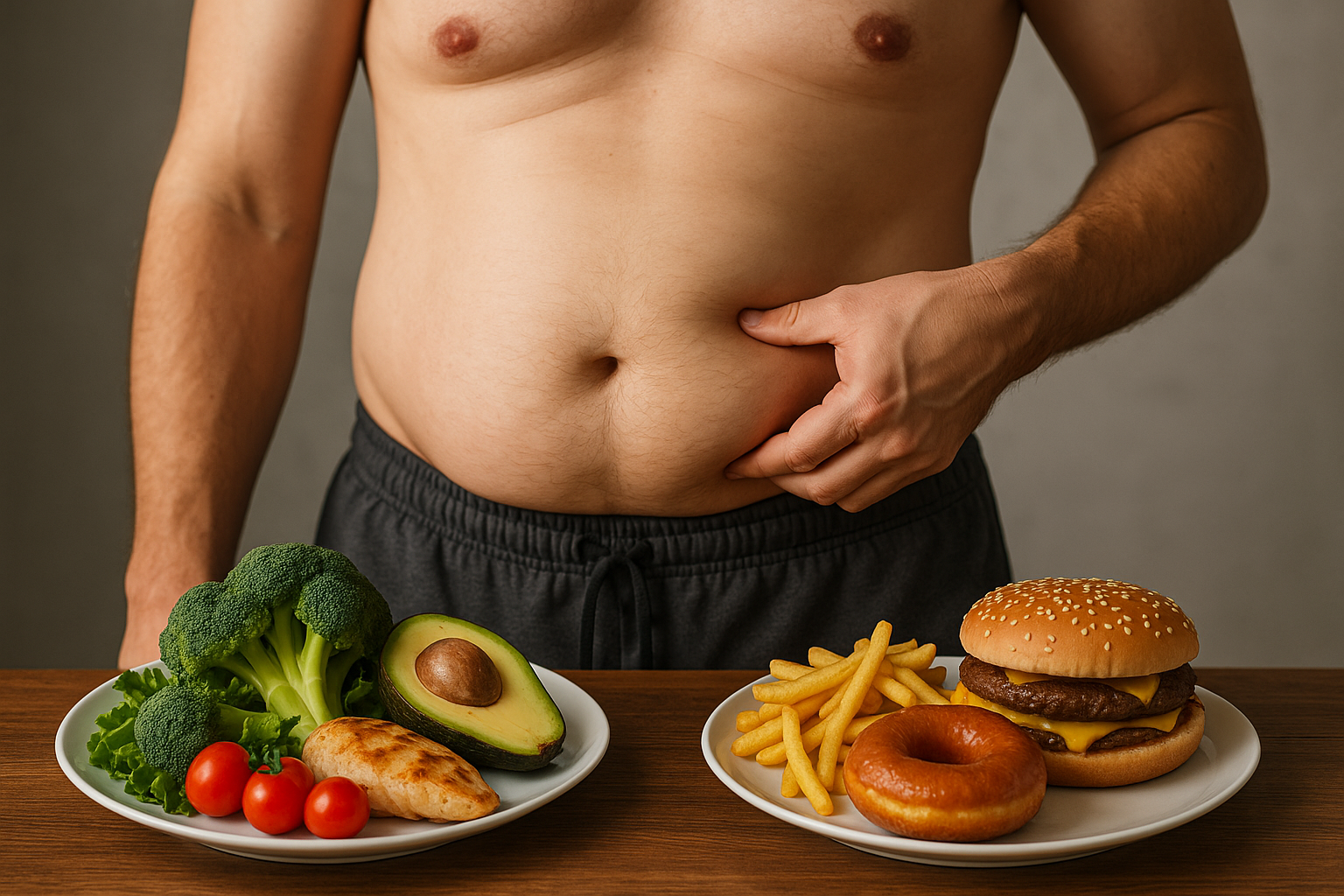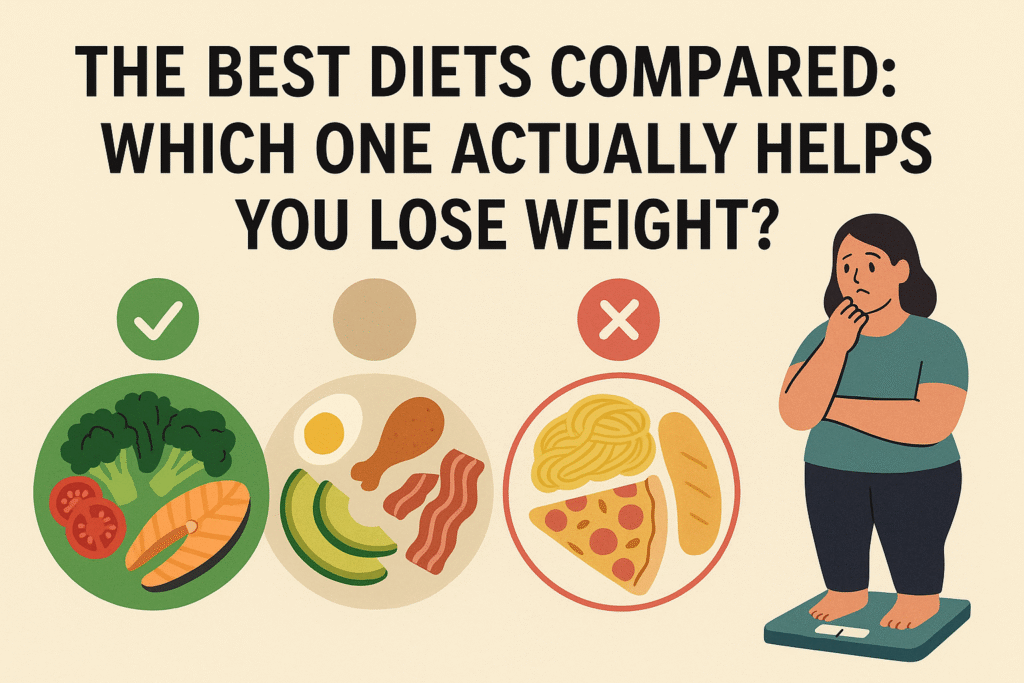When it comes to losing weight, there’s no shortage of diets promising quick results. Sorting through the noise is easier if you focus on two facts supported by the best evidence: (1) weight loss requires a sustained calorie deficit, and (2) the single biggest predictor of success is adherence — the diet you can stick with. Different dietary patterns help people create and maintain that deficit in different ways, and they vary in effects on hunger, health markers, and sustainability. Below is a practical, evidence-based comparison of the most commonly recommended approaches.
How diets produce weight loss
– Calorie deficit: Eating fewer calories than you expend is the physiologic requirement for weight loss. Any diet that consistently reduces calorie intake will produce weight loss.
– Appetite and satiety: Diets that increase fullness (more protein, fiber, volume) make it easier to sustain a calorie deficit.
– Early changes: Low-carbohydrate diets often produce faster initial weight loss due to water loss from reduced glycogen stores; long-term differences typically narrow.
– Behavioral factors: Meal timing, food palatability, social fit, and support influence adherence more than macronutrient ratios alone.
Diets compared
Low-carbohydrate and ketogenic diets
– What they are: Restrict carbs (ketogenic diets typically <20–50 g/day) and raise fat and/or protein.
– How they help: Reduce insulin spikes and may suppress appetite; can produce rapid early weight loss.
– Evidence: Often show greater short-term weight loss (first 3–6 months) versus low-fat diets; differences are smaller or vanish at 12 months and beyond unless adherence is maintained.
– Pros: Good for people who enjoy higher-fat, lower-carb foods and find carbs triggering; may improve triglycerides and HDL.
– Cons: Harder to sustain long term for many; possible increases in LDL cholesterol in some people; restrictive choices can impede social eating.
– Who it suits: People who respond well to higher protein/fat and can manage the dietary restrictions; monitor lipids and kidney status if necessary.
Mediterranean diet
– What it is: Emphasizes vegetables, fruits, whole grains, legumes, nuts, olive oil, fish, moderate dairy and limited red meat and sweets.
– How it helps: High in fiber, healthy fats, and satisfying foods — supports weight loss by improving satiety and dietary quality.
– Evidence: Produces modest and sustained weight loss and clear benefits for cardiovascular risk factors; comparable to other effective diets when calories are controlled.
– Pros: Flexible, palatable, nutrient-dense, sustainable, heart-health benefits.
– Cons: Weight loss requires attention to portion sizes and total calories.
– Who it suits: Most people; especially good for those prioritizing overall health and sustainability.
Intermittent fasting (time-restricted eating, alternate-day fasting)
– What it is: Limits eating to certain windows (e.g., 8-hour daily window) or alternates low-calorie days with normal days.

– How it helps: Reduces overall calorie intake for many people and simplifies choices; may have metabolic benefits independent of weight loss in some settings.
– Evidence: Similar weight loss to continuous calorie restriction when total calories are matched; adherence tends to determine success.
– Pros: Flexible structure, can reduce meal planning burden for some.
– Cons: Some experience hunger, irritability or overeating during feeding windows; not ideal for people with a history of disordered eating.
– Who it suits: People who prefer time-based rules and can tolerate fasting periods.
Plant-based and vegetarian diets
– What they are: Emphasize whole plant foods; degree of restriction varies (vegetarian vs vegan).
– How they help: Often lower in energy density and saturated fat, higher in fiber — can reduce calorie intake naturally.
– Evidence: Can produce meaningful weight loss if whole-food based; highly dependent on food choices (processed vegan foods can be calorie-dense).
– Pros: Associated with lower chronic disease risk, ethically appealing for many.
– Cons: Requires planning to ensure adequate protein, B12, iron and other nutrients if restrictive.
– Who it suits: People motivated by animal welfare, environmental concerns, or who prefer plant foods.
Low-fat diets
– What they are: Limit total fat intake and emphasize carbohydrates and lean proteins.
– How they help: Lowering fat intake reduces calories because fat is calorie-dense.
– Evidence: Effective for weight loss; long-term results similar to other diets when calories are matched. Historically recommended, now often combined with emphasis on food quality.
– Pros: Easier for some people to follow; may lower saturated fat intake.
– Cons: Can increase hunger if protein and fiber are low; many low-fat processed foods are still calorie-dense.
– Who it suits: People who prefer higher-carb eating patterns and lean proteins.
DASH (Dietary Approaches to Stop Hypertension)
– What it is: Emphasizes fruits, vegetables, whole grains, lean protein, low-fat dairy; designed to lower blood pressure.
– How it helps: Balanced, nutrient-dense pattern that can produce modest weight loss when calories are controlled.
– Evidence: Proven to reduce blood pressure; weight loss similar to other structured, calorie-controlled diets.
– Pros: Heart-healthy, evidence-based, flexible.
– Cons: Requires attention to portions for weight loss.
Paleo and other exclusionary diets
– What they are: Emphasize whole, unprocessed foods and avoid grains, legumes, dairy or processed food depending on the version.
– How they help: Can reduce caloric intake by removing many high-calorie processed foods.
– Evidence: Can yield short-term weight loss; long-term effects similar to other diets and sustainability varies.
– Pros: Encourages whole-food intake, reduces processed foods.
– Cons: May eliminate nutritious food groups unnecessarily for some people; can be socially restrictive.
Commercial programs (e.g., WW/Weight Watchers) and meal replacements
– What they are: Structured programs using points, counseling, prepackaged meals or coaching.
– How they help: Provide behavior change tools, accountability and simplicity.
– Evidence: Commercial programs with support and accountability often produce reliable weight loss and better long-term outcomes than self-guided attempts.
– Pros: Support, tracking, community and evidence-based strategies.
– Cons: Cost and fit with personal preferences vary.
Very-low-calorie diets (VLCDs) and medically supervised programs
– What they are: Very low calorie (<800 kcal/day) under medical supervision, used short-term for severe obesity.
– How they help: Produce rapid weight loss; used before surgery or to improve metabolic health quickly.
– Evidence: Effective short term; regain is common without long-term maintenance strategies.
– Pros: Rapid results, medically useful in select circumstances.
– Cons: Need medical supervision; nutrient risks and side effects; not for casual use.
What the research overall shows
– At 12 months and beyond, most well-formulated diets result in similar weight loss when calorie intake is comparable. Differences seen early (e.g., greater short-term loss on low-carb) often diminish over time.

– Diet quality and improvements in metabolic health (blood pressure, blood sugar, lipids) vary by pattern — Mediterranean and plant-focused diets reliably improve cardiovascular risk factors.
– Adherence, behavior change, social support and the ability to maintain the eating pattern long-term are stronger predictors of success than macronutrient composition alone.
Practical guidance for choosing a diet
– Pick one you can see yourself following for months and years, not just weeks.
– Prioritize whole foods: vegetables, lean proteins, legumes, whole grains, nuts, and healthy fats.
– Manage portions and reduce calorie-dense ultra-processed foods.
– Emphasize protein and fiber to improve satiety.
– Use behavioral tools: meal planning, tracking, regular weigh-ins, problem-solving for high-risk situations, and social/support systems.
– Combine dietary change with physical activity — exercise helps preserve lean mass and improve fitness and metabolic health.
– Aim for realistic, healthy weight loss: roughly 0.5–1 kg (1–2 lb) per week is typical; 5–10% body weight loss is often clinically meaningful for health.
Sample flexible approaches (two examples)
– Mediterranean-style day (no calorie counting shown; focus on choices): breakfast — Greek yogurt with berries and walnuts; lunch — salad with mixed greens, chickpeas, grilled salmon, olive oil-vinaigrette; snack — apple + small handful of almonds; dinner — whole-grain pasta with tomato, vegetables, olive oil and grilled chicken; dessert — fresh fruit.
– Time-restricted, plant-forward day (16:8 fasting example): eating window 12:00–20:00: 12:00 — vegetable omelette with spinach and tomato; 15:00 — mixed salad with quinoa, beans, avocado; 18:30 — stir-fried tofu and vegetables with cauliflower rice; 19:30 — small piece of dark chocolate or fruit.
Safety and when to consult a clinician
– See a doctor before starting very low-calorie diets, ketogenic diets (if you have high cholesterol, kidney disease, diabetes, or take medications), or any diet if you are pregnant, breastfeeding, under 18, or have a history of an eating disorder.
– People with type 1 diabetes or on insulin need medical supervision for major dietary changes.
– Monitor labs (lipids, kidney function, glucose) as recommended for your health conditions.
Bottom line
No single “best” diet fits everyone. The most effective weight-loss plan is the one that:
1) produces a sustainable calorie deficit,
2) reduces hunger and fits your lifestyle, and
3) you can maintain long-term. For many people, Mediterranean-style or other whole-food, plant-forward patterns offer the best mix of health benefits and sustainability. For those who prefer low-carb or time-restricted eating, these can also be effective if you stick with them and pay attention to food quality. If you need extra structure, evidence-based commercial programs and professional support improve outcomes. Focus less on labels and more on consistent habits you can maintain over time.

